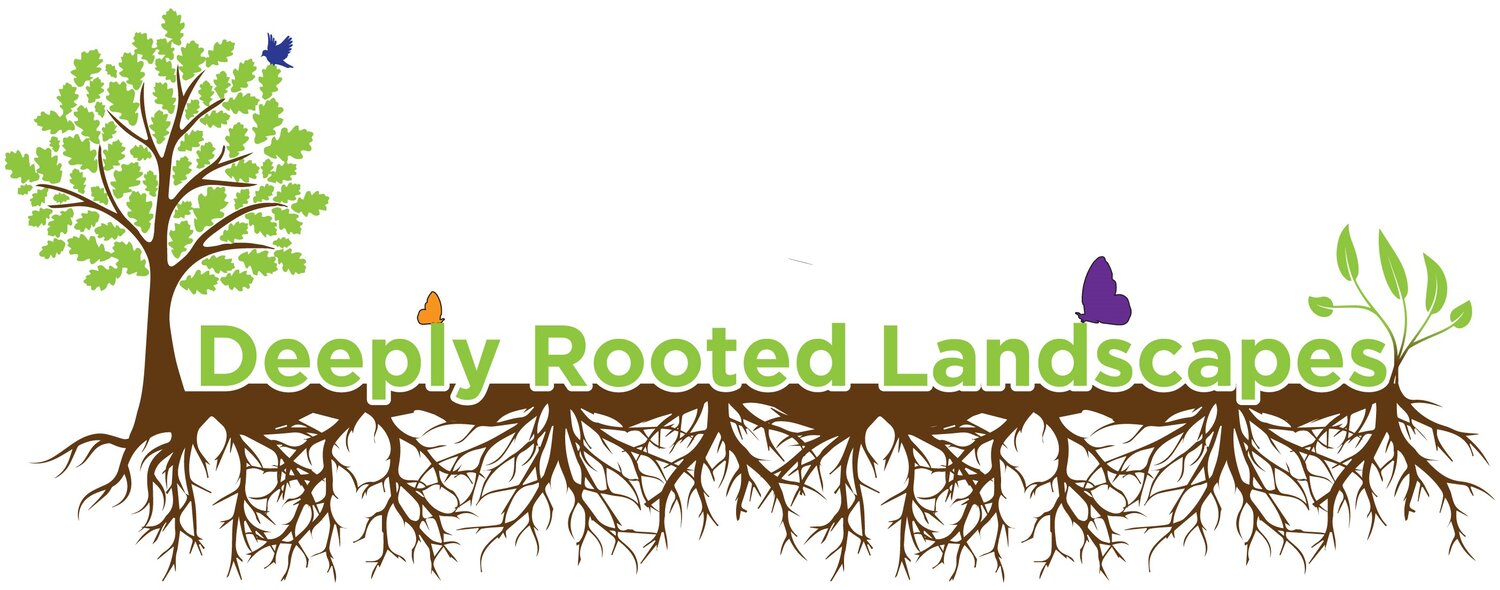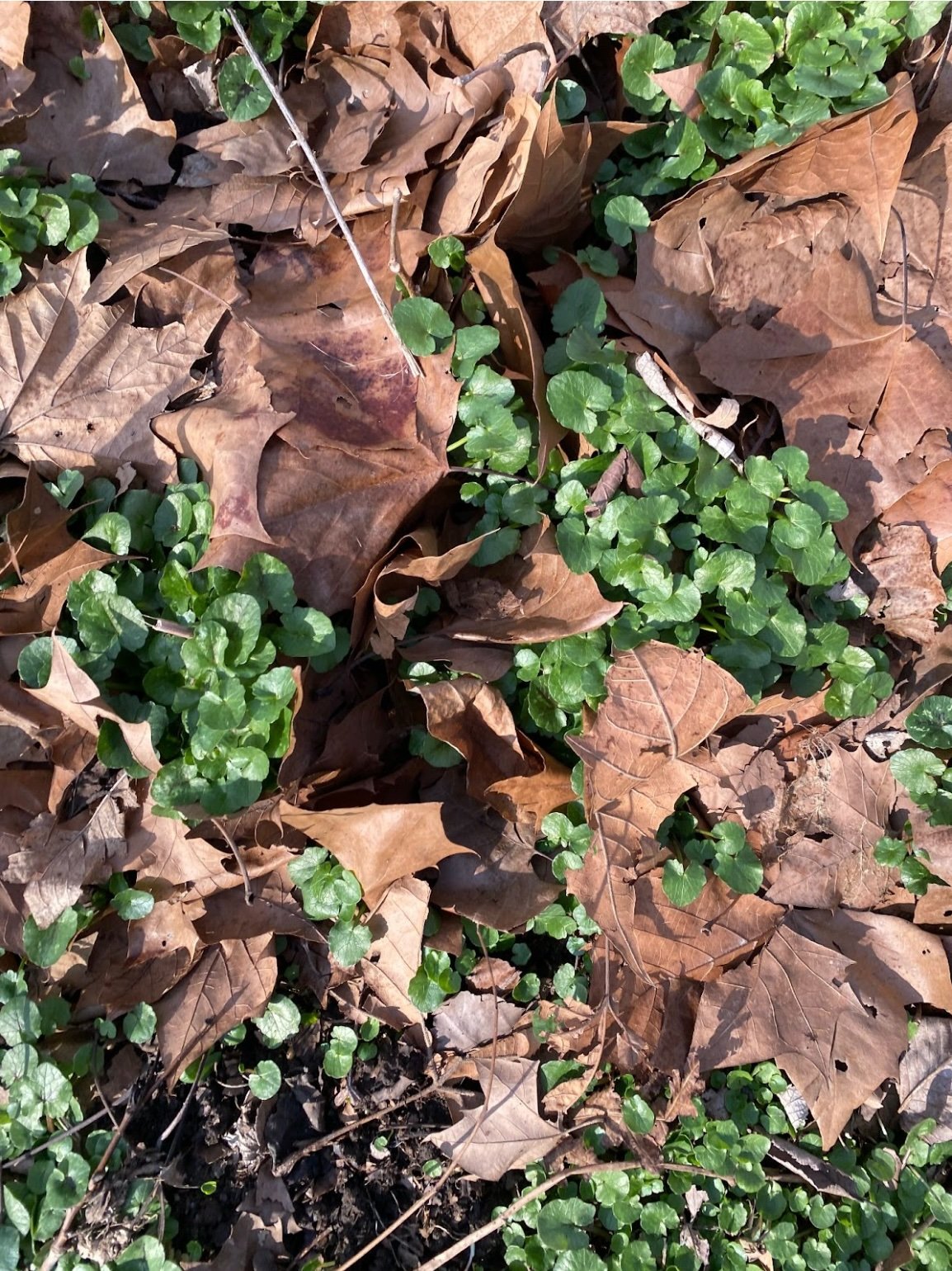What is an invasive plant?
On the heels of Invasive Species Week, we thought it might be a good time to define an invasive species—and what it isn't! A plant has to meet criteria to be considered an invasive species; the label isn't something we can just attach to any weed we don't like to see in our gardens.
In order to keep things somewhat short, we'll be talking about invasive plants here, not insects or animals, though there's an interaction there that is fascinating and worth looking into.
Pictured: Lesser celandine (Ficaria verna), an invasive plant that blankets local riverbanks.
Who decides?
As mentioned above, plants must meet several criteria before being labeled invasive. Who makes the final call? In Ohio, it's the Department of Agriculture that took nearly two years to consider expert input before banning the sale of over three dozen invasive plant species (effective as of 2018). According to a federal code on invasive species, an invasive plant is defined as "An alien species whose introduction does or is likely to cause economic or environmental harm or harm to human health."
The Ohio Department of Natural Resources expands on that definition, saying invasive species are "...usually characterized by fast growth rates, high fruit production, rapid vegetative spread and efficient seed dispersal and germination. Since these plants are not native to Ohio, they lack the natural predators and diseases which would naturally control them in their native habitats."
Essentially, these plants are reproducing outside the ecosystem where they evolved, so any inherent checks and balances in the ecosystem they find themselves in just don't exist. As a result, the native plants that did evolve alongside other species in this ecosystem now can't play their part because the invasive species has taken over, pushing them out. Ecosystems overrun by native plants can collapse, which has a cascading effect on the environment – from plants to people – as a whole.
Invasive plants (and other species) are usually moved around – intentionally or otherwise – by humans and tend to concentrate in areas of disturbed ground and land adjacent (by acres or miles) to these places. If you think of all of the Callery Pear (Pyrus calleryana), you see along the highway or Barberry (Berberis spp.) in woods near a housing complex, this will make sense.
Many people don't realize that selling, propagating, or otherwise distributing invasive plants in Ohio is prohibited. Many people inherit invasive plants when they buy a new home and offer them to friends when they decide to change their landscaping, not knowing they're harmful. If you're unsure, this list from the ODA will help you figure out if a plant is something you should put in your landscape.
What they're not
There are many different terms used to describe plant communities. Invasive plants need to be removed to help preserve the local ecosystem. They overrun a landscape and have few predators and other checks and balances to keep them from taking over an area while offering little value to that area. Economic costs to prevent and remove these plants are high—over 100 billion dollars yearly.
Not all foreign plants are invasive. Some are described as naturalized – spreading freely in an area but not meeting invasive species criteria.
Native plants that grow rapidly and may creep into another plant's territory are considered aggressive or vigorous. Because they have evolved in the ecosystem in which they live alongside other native organisms, they provide value to and have an intrinsic place within that ecosystem and are not considered invasive.
Common comments
I don't see it taking over my neighborhood. Looking at the above criteria, you may think some plants considered invasive really aren't all that bad. After all, you don't have twenty Barberry (Berberis spp.) growing in your small suburban yard, right? We hear this often. Plants have evolved great dispersal mechanisms for their seeds – wind carries many, and others are eaten by birds and dropped (along with potent fertilizer) far away. Some seeds will end up in your yard, but many will be taken – by wind or animals – further away and germinate somewhere you may never see them. We also mow our lawns regularly, cutting down invasive plant seedlings that may have germinated in our own yards, making them easy to overlook. If you let a patch of lawn (untreated by herbicide) grow for an extra week or two, you'll be surprised by what pops up.
I see bees or butterflies on the flowers of this plant. If bees were botanists, this wouldn't happen! All kidding aside, bees are drawn to flowers that have pollen and/or nectar. They don't know if it's the most nutritious pollen—high in proteins and fats for their young—or if it lacks those traits since it didn't evolve for native bees in this region. They see a flower with food that they instinctively assume will work for them.
Native plants evolved alongside their pollinators, and many can even refill their nectar stores to coordinate with the time of day specific insect pollinators are most likely to visit. The plants that have lived alongside insects for thousands of years have the food our pollinators need to feed themselves and their larvae. Invasive plants may look attractive to bees and butterflies but lack substantial nutrition to help keep populations alive and healthy.
In addition, invasive plants that originated elsewhere in the world and aren't native here aren't host plants for the butterflies that are native here. Butterfly larvae – aka caterpillars – need a host plant to feed on. Those plants will be native to not only the United States but often a specific region. Planting an invasive species instead of a native one takes away that caterpillar's food source. This reverberates throughout an ecosystem where plants rely on butterflies as pollinators, and birds and other animals rely on caterpillars as a food source for themselves and their babies. As invasive plants proliferate through an environment that isn't equipped to keep them in check, food, and habitat for insects and animals decrease or are eliminated.
But what else would they eat? This is a common comment concerning birds (and other animals) in early winter and bees in early spring. It's well-intentioned—people want to see the animals in their community thriving and healthy. It is actually a really important consideration: What will be put in this invasive plant's place? Animals do eat autumn olive berries. Bees use the nectar and pollen from invasive plants, even if they're not a perfect source of nutrition.
This brings us to an important rule regarding removing invasive plants: you need to put something else in their place. Do you have some Autumn Olive hanging out in your backyard? Can you replace them with Hawthorn (Crataegus spp.) or a native Rose (Rosa spp.), which can provide a food source later in the year when other resources are scarce? Can you plant a Maple (Acer spp.) or Redbud (Cercis canadensis) tree for early spring blooms for bees? Other late winter and early spring options are bloodroot (Sanguinaria canadensis), Virginia Bluebells (Mertensia virginica), wild Violets (Viola sororia), Spring Beauty (Claytonia virginica), Spicebush (Lindera benzoin), and many more. It's not that there aren't native options – there are plenty! But, it can be hard to see past a field of honeysuckle and wonder how pollinators will eat if it's wiped off the map. It's critical to plant something in its place that will better serve that ecosystem and its inhabitants.
Now that we've defined an invasive plant species, it should be easier to understand why so many companies, volunteer groups, and organizations are working hard to eliminate invasives and build—or rebuild—robust ecosystems with native plants.

